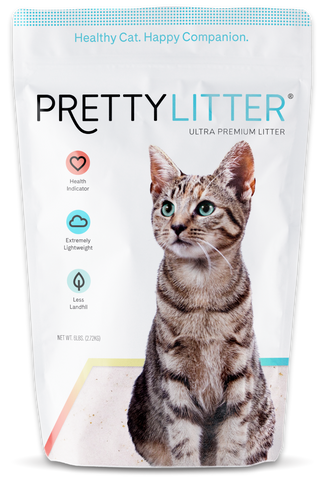November 7, 2018 |5 min read |Veterinarian Reviewed
Keeping Kitty Clean: Common Cat Diseases

Written by

Pets are family, and common cat diseases can be a major drag for the smallest member of your family. Many cat diseases can be discomforting and even dangerous to your beloved pet, but it's not the end of the world. After all, keeping your cat healthy is the goal of every cat owner. We know that the stress of a sick pet isn’t going to benefit you in any way, so let’s keep kitty clean!
Vomiting
Unpleasant to watch? You bet. Worse to experience? Agreed! Vomiting is one of those common cat diseases that can cause some concern for owners. Occasional vomiting is perfectly normal and happens when your cat eats something inappropriate. Hairballs, string, and toys are perennial problems.
If your cat is vomiting only once in a while, there’s no need to worry. Cats can vomit from eating too fast, vigorous exercise soon after eating, or from eating some ‘off’ food. Frequent vomiting, though, might mean some care is in order. Persistent vomiting—daily or more—can be a sign of food allergies, feline diabetes, or a stuck hairball. If the vomiting continues, it’s a good idea to talk to a professional veterinarian.
Cat Litter That Prioritizes Their
Health & Your Happiness.
to get your first bag for only $14.99
Toilet Troubles

Trouble in the toilet is a common cat disease, and one that can cause significant discomfort to your cat. Feline Lower Urinary Tract Disease (FLUTD) is a contender if your feline friend has trouble urinating. Painful cries coming from the litter box? That’s a sign that your cat may be suffering from FLUTD, but the big red flags include blood in the urine or a complete halt to urination—if this happens, you’re looking at a possible urethral obstruction. Getting to the nearest emergency veterinary clinic right away is the best approach at that point.
The causes of this common cat disease vary. A cat UTI, urinary stones, or the more dangerous urinary obstruction are all causes of FLUTD.
Treatment depends on the cause of the disease. Keeping an eye on your cat’s urinary health is a good idea, and following basic health principles never hurt. Make sure your cat has fresh water, a clean litter box, and a diet appropriate for the breed. Urinary problems are common, but are usually cleared up without too much trouble.
Diarrhea: Play It Safe
Diarrhea is definitely a drag, both for you and your cat. Like vomiting, occasional diarrhea can happen from consumption of bad food or a change in diet. Other common causes include extreme stress, allergic reactions, or drinking milk. Cats do not handle cow milk well and accidental milk ingestion is a common cause for diarrhea.
Identifying diarrhea means keeping an eye on your cat and its stools. The most obvious sign of diarrhea—loose and frequent feculence—is often accompanied by fever or dehydration. Similar with vomiting, persistent or frequent diarrhea (more than three toilet trips a day) means a trip to the vet is in order.
The red flags for cat diarrhea are what you might imagine: bloody stools, black fecal matter, or dehydration. If any of those symptoms show up, it’s time to get to the vet, and quickly. The more serious causes of diarrhea (intestinal parasites, hyperthyroidism, infections, organ disease) need the attention of a vet to treat properly.

Don’t Worry and Keep Calm

Having a sick pet is terrifying. It’s a trying time for both you and your cat, and it’s worse when the symptoms can mean different things. Thankfully, common cat diseases are just that—common—and there’s a host of ways to keep your kitty clean.
Freshwater, clean litter boxes, and an appropriate diet will go a long way towards cat health. If more serious or persistent symptoms show, it’s a good idea to see a vet right away. Keeping a watchful eye on your cat’s litter box is a good idea for pet owners looking to keep their feline friends hale and hearty.
Do you have experience with keeping your cat healthy? Let us know in the comments!
----
Don't forget to follow us on Instagram: @prettylittercats
----
Delivered straight to your front door, every month. We’ll even pay your shipping.








